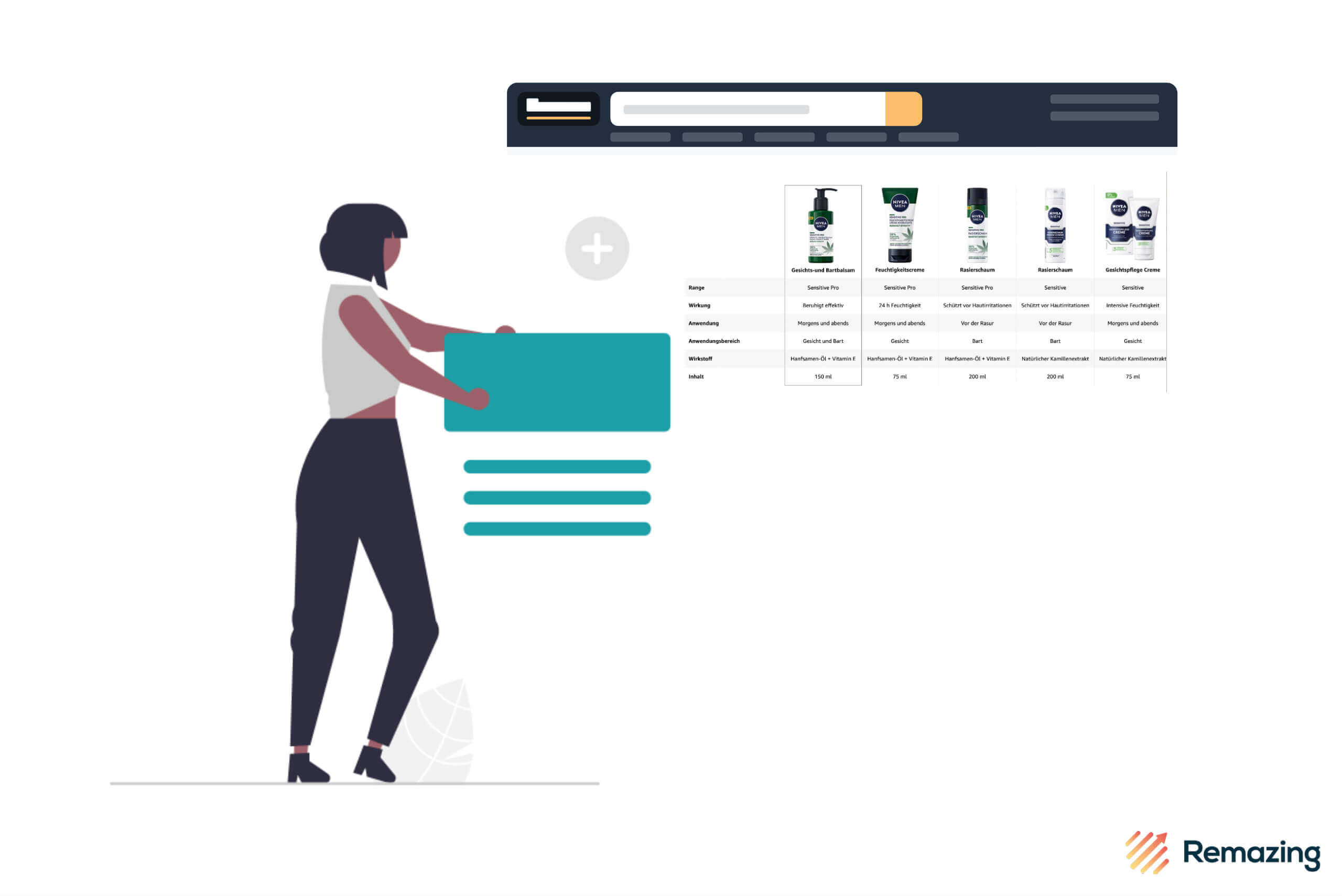
Amazon Backend Keywords: What they mean and how to optimise them

They are essential when it comes to organic visibility of products, but aren’t ever seen by customers: Welcome to the world of Amazon backend keywords. Their status as the important group of keywords makes them of particular interest to everyone who is looking to push their products up the search result rankings on Amazon.
Amazon SEO fundamentals: How is Amazon SEO built?
When it comes to the search engine optimisation of Amazon content, it’s critical to distinguish between frontend and backend keywords. Frontend keywords are integrated into the product title, bullet points, and description. The most relevant keywords should be integrated into the title, as shoppers often look here as their first point of contact and it’s helpful for them to be able to directly see their chosen search terms. Further words and phrases with a high search volume can additionally be used in the bullet points and product description. At Remazing we recommend that approximately three keywords go in the title and anywhere from five to eight go into the bullet points.
All Amazon search terms that don’t directly fit the product, and therefore aren’t included in the product texts but are still loosely associated with the product, can still be utilised as backend keywords.
What are Amazon backend keywords?
In general, backend keywords – on Google as well as on Amazon – are search terms that are broadly related to the product or product category, but aren’t specific enough to go in the actual text. For some products for example, these could be similar materials, colours, or sizes. So for the search result “Wooden Salad Servers”, a set of salad servers that are made of bamboo would also show up if “bamboo” was present in that product’s set of backend keywords. The more relevant backend search terms that are chosen, the greater the likelihood that a customer will purchase that product when it is shown to them. On the other hand, less relevant keywords can lead to lower conversion and click-through rates.
In Vendor and Seller Central, Amazon backend keywords can be found in the product catalog under “product details” and then “generic keyword”. In total 249 bytes (character) are permitted, and the individual search terms do not have to be separated by punctuation marks and should generally be written in lower case. For the byte limit, it’s sensible to use a character counter, as special characters can count as more than one byte. In our content management system Remdash, we have a separate field for the backend search terms, where the bytes are counted automatically.

How to optimise Amazon backend keywords
Backend keywords can be found in much the same way as frontend keywords: There are many free and subscription-free keyword tools that are designed for Amazon optimisations. Additionally there is also “Brand Analytics”, which can be found in Vendor or Seller Central under “Reports”. Brand Analytics has the advantage that it uses data taken directly from Amazon.
The following terms are suitable as Amazon backend keywords:
- Common misspelling of difficult words for instance consider “vaccuum” if your product is related to “vacuum cleaner”
- Common splittings/hyphenating of words (e.g When “foot care” or “anti-blister” are the official terms, place “footcare” or “antiblister” in the backend keywords)
- Longtail keywords (e.g Kettle with temperature display)
- Related terms
- Materials, sizes
- Abbreviations

The following terms should not be placed in the Amazon backend keywords (and will only take up space!):

Subscribe to our newsletter now and receive regular updates on Amazon and other online marketplaces.
Subscribe to the newsletter now.
- Plural versions, when the singular is already in the content
- Very minor misspellings. These are already correct by Amazon, so for instance, for “sother” products, search results for “soother” will be displayed
- Prepositions and filler words
- Punctuation
- Any repetition
All of the following are forbidden from being placed in the backend keywords by Amazon:
- ASINs
- Subjective or temporary claims (e.g “Cheap” or “special offer”)
- Any kind of brand names
- Insulting or offensive language
As the Amazon Algorithm considers each keyword group separately when indexing the search terms, it is worth also adding search terms to the backend keywords, that are already in the front end. It makes most sense when lots of adjectives are present, as these are often associated with the main search terms.
Already uploaded Amazon content should be regularly optimised, in this sense it is worth taking the time to check over the stored backend keywords.
Tips for the optimisation of existing Amazon backend search terms:
- Are the keywords still relevant?
- Are there repetitions or the presence of plurals alongside the singular, which are taking up space.
- Are certain combinations of terms possible that aren’t present in the frontend?
Side note: backend keywords in the A+ content manager
Amazon keywords can’t just be used in SEO-Content but also in Vendor and Seller Central. Whenever a picture is added to the A+ content manager, the system demands that “image keywords” be added. As these keywords aren’t viewed by the Amazon Algorithm and are instead very loosely indexed by Google, it makes more sense to use these fields as image descriptions for the visually impaired: With the aid of certain software, these hidden terms are read aloud and therefore the reader can get a sense of what is portrayed in the image. Since neither the image keywords, nor the frontend texts are indexed by Amazon, more and more Sellers and Vendors are opting for a “A+ Onepager”. These are composed exclusively of graphically optimised images with no additional text.
More info regarding A+ content and a complete step-by-step guide, can be found on our blog.
Conclusion: important keywords in the Amazon backend
Amazon backend keywords are an invaluable opportunity to cover high-volume and relevant search terms, that because of misspellings, regulations, or not fitting exactly to the product, don’t fit in the frontend. Alongside the title, bullet points and description, they have a great deal of influence over the organic ranking of a product on the search results page. Whoever is optimising backend keywords, should however be prepared to consult Amazon’s list of specifications!
Are you interested in an expert analysis of your Amazon account?
Request free analysisRelated articles
Remazing GmbH
Brandstwiete 1
20457 Hamburg
©Remazing GmbH




